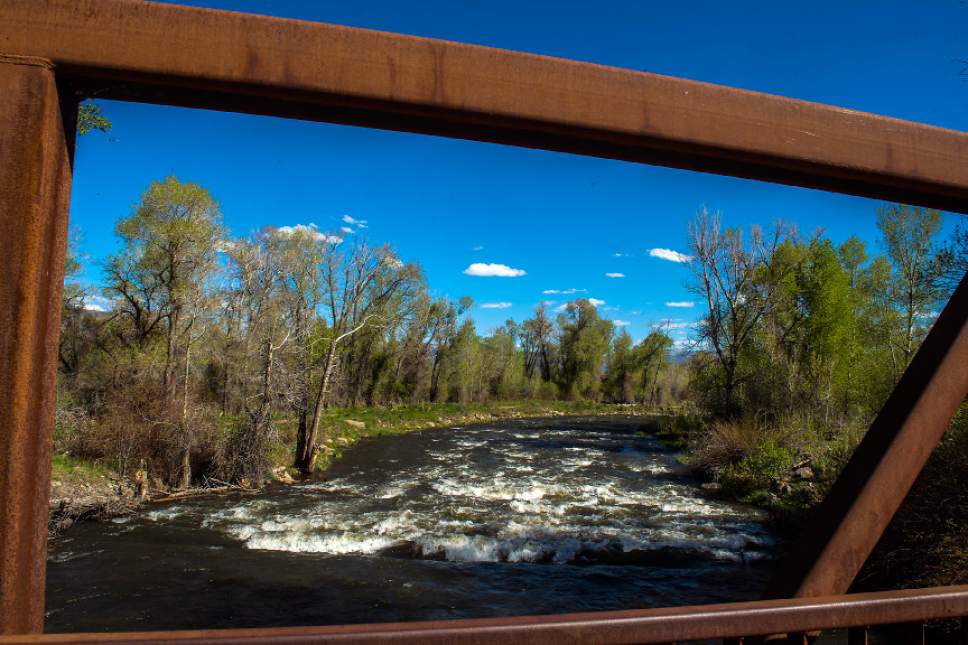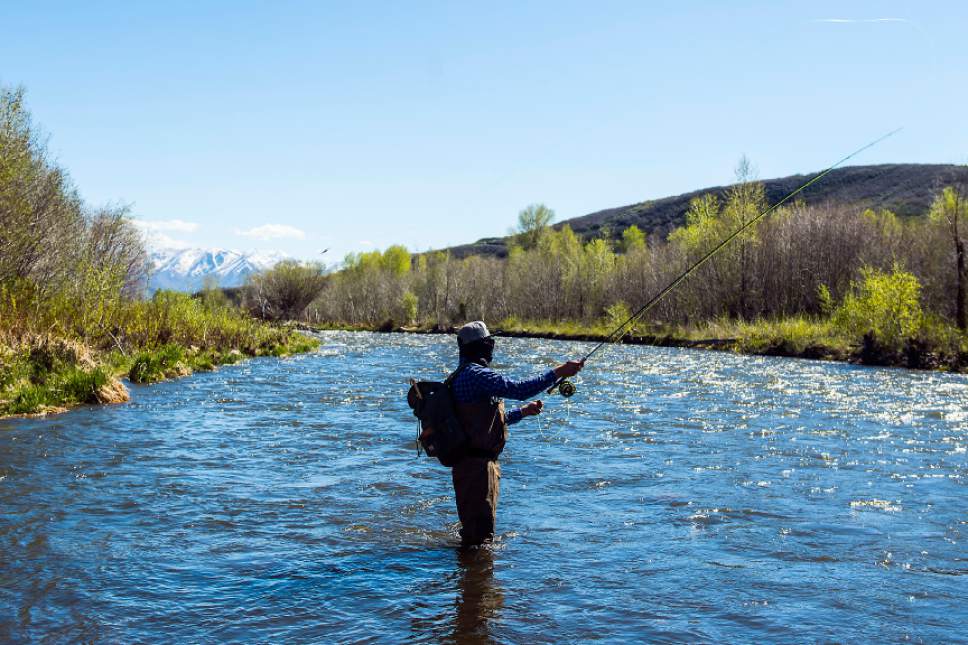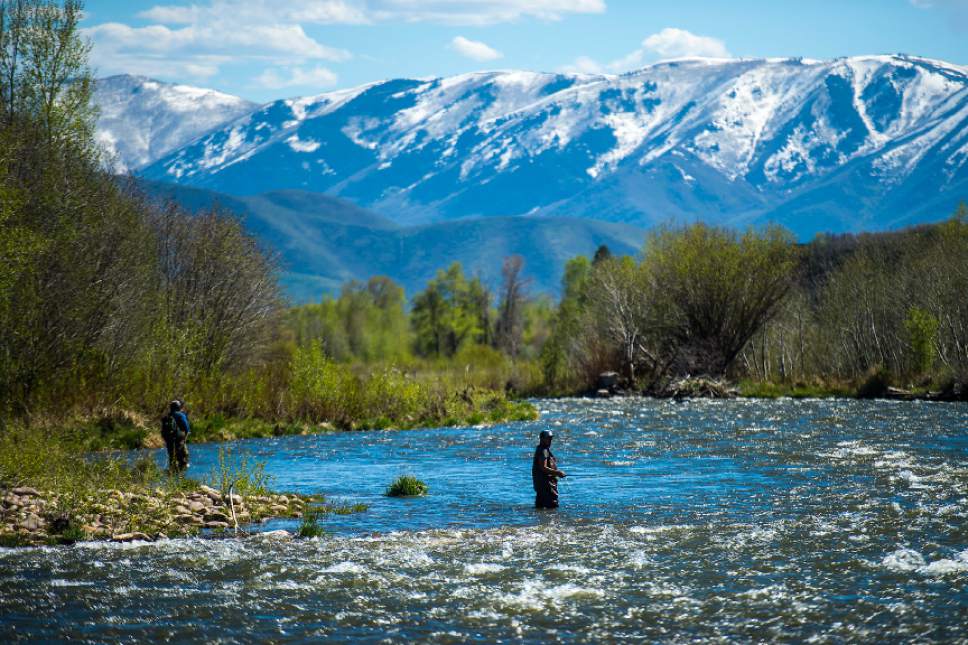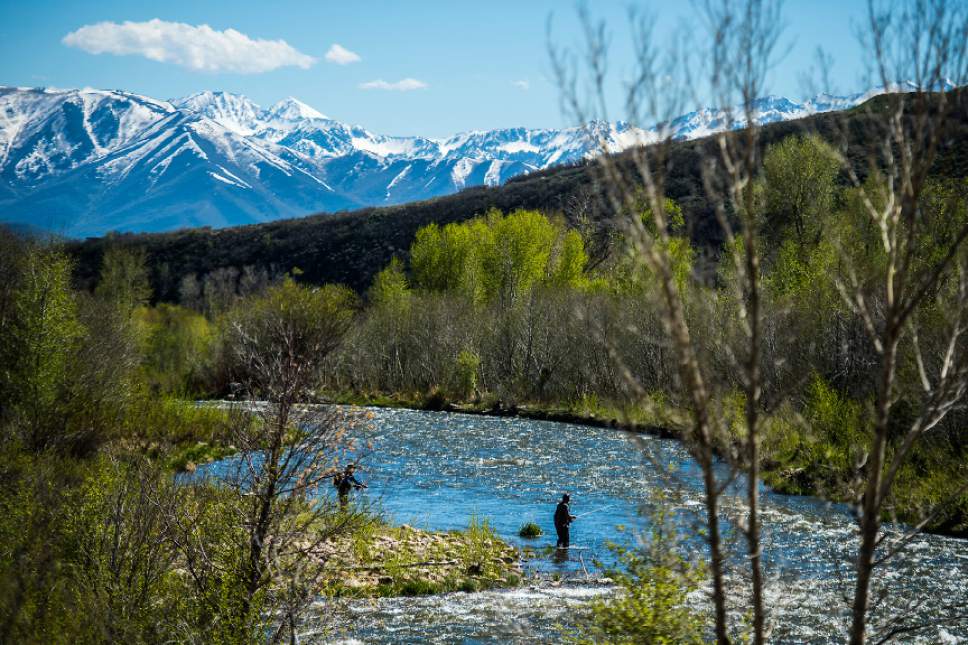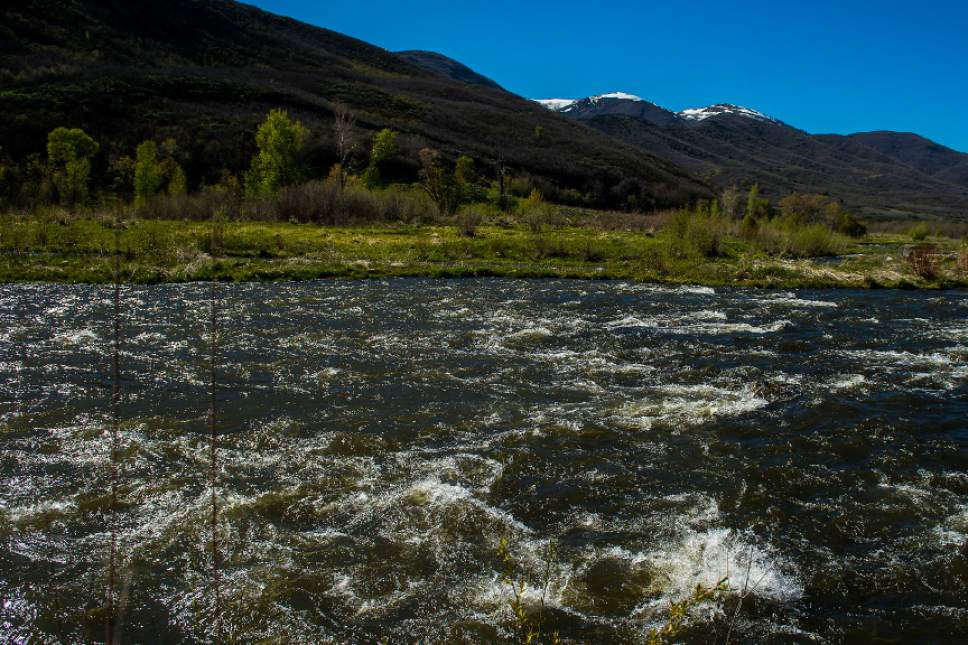This is an archived article that was published on sltrib.com in 2017, and information in the article may be outdated. It is provided only for personal research purposes and may not be reprinted.
Several northern Utah rivers are practically guaranteed to overflow their banks later this month, based on the amount of snow remaining in mountains above them.
Though southern portions of the state have dried out considerably, some mountains in northern Utah still have twice as much snow as normal for this time of year, according to the monthly Utah Climate and Water Report from the Natural Resources Conservation Service.
Rivers are already running high, and that mountaintop snow hasn't even hit their watersheds yet, said Randy Julander, snow survey supervisor for the federal agency in Utah.
"The rodeo started," Julander said, "but the bull riding is going to happen here in two or three weeks."
As temperatures rise and snow begins to melt, Julander said, the Bear, Weber, Provo and Duchesne rivers are all expected to overflow their banks within the month.
The high flows should last well into June, he said.
River-related flooding is going to be different than residents in Box Elder and Cache counties saw earlier this year. Those floods, Julander said, occurred because rain and snow continued to fall on already saturated soils.
Grounds have since dried out, he said, so an encore of that problem is unlikely this late in the season.
It's also unlikely that Salt Lake City will have water running down downtown streets in a reprise of record flooding in 1983. That was a result of inadequate storm drainage and other infrastructure that failed during the runoff season, he said, and those issues have since been addressed.
But riverside properties could be at risk for damage this summer, depending on how the season unfolds.
"Certainly, we're going to see water over the banks in a lot of places," Julander said. "Whether that translates to actual damage is anyone's guess at this point."
To prevent the loss of human life, Julander said Utahns should avoid the fast-flowing runoff. Places that were safe for wading last year may not be so this year.
"Most people simply do not understand the power that fast-moving water has," he said. "You walk in up to your knees and you can be knocked off your feet, and once you get sucked under the water there is very, very little chance that you will be able to get out."
At least one Utahn has already drowned so far this year.
But on the positive side, Julander said, this year is going to be good for storing water for drier years to come.
"It's going to be a fantastic water year," he said. "We will bank a lot of water … and will have some breathing room for a little while."
epenrod@sltrib.com
Twitter: @EmaPen


